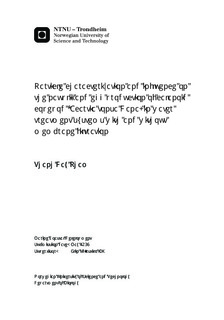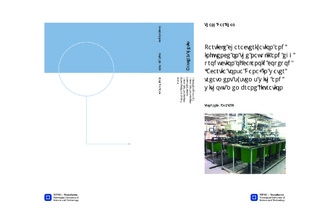| dc.contributor.advisor | Kjørsvik, Elin | nb_NO |
| dc.contributor.author | Pham, Thanh Day | nb_NO |
| dc.date.accessioned | 2014-12-19T13:13:41Z | |
| dc.date.available | 2014-12-19T13:13:41Z | |
| dc.date.created | 2014-07-10 | nb_NO |
| dc.date.issued | 2014 | nb_NO |
| dc.identifier | 733663 | nb_NO |
| dc.identifier | ntnudaim:10645 | nb_NO |
| dc.identifier.uri | http://hdl.handle.net/11250/245464 | |
| dc.description.abstract | The calanoid copepod Acartia tonsa has been demonstrated to be able to replace the Artemia or rotifer for marine fish larvae due to its excellent nutrient, wide range of temperature and salinity tolerance and capability of producing resting eggs in the life cycle. Hence, A. tonsa is one of the most promising copepod species for marine larviculture purposes. The present study conducted to evaluate the impacts of colloidal particles (30 nm - 1µm) and fine solids (2 µm 60 µm) on nauplii and egg production of the copepod A. tonsa in three systems: conventional recirculating system (cRAS), membrane modified recirculating system (mRAS) and flow through aquaculture system (FTAS). The initial copepod density was 75000 ind L-1 for investigating of growth performance and 15 ind L-1 for testing of egg production capacity of the copepods within 4 weeks.The results in the present study showed a better water quality regarding nitrogenous waste products and colloidal particles concentration in the FTAS compared to the RAS systems (cRAS and mRAS) during the experiment. The survival rate, nauplii and egg production of the copepods in the FTAS were significantly higher than the RAS systems (p < 0.05); while in the mRAS they were not significant difference to the cRAS (p > 0.05). The high concentration of colloidal particles in the RAS systems during the experiment could be an indication for the significant difference of nauplii and egg production compared to the FTAS (p < 0.05). Nevertheless, no effects of fine solids in all systems were observed on the performance of A. tonsa in terms of survival, growth and development, as well as nauplii and egg production rate. An efficient removal of colloidal particles in the mRAS compared to the cRAS and FTAS was only observed after increasing the water exchange rate (to 8 times daily volume tank) from 8 days post hatching. | nb_NO |
| dc.language | eng | nb_NO |
| dc.publisher | Institutt for biologi | nb_NO |
| dc.title | Particle characterization and influence on the nauplii and egg production of calanoid copepod (Acartia tonsa Dana) in water treatment systems with and without membrane filtration | nb_NO |
| dc.type | Master thesis | nb_NO |
| dc.source.pagenumber | 68 | nb_NO |
| dc.contributor.department | Norges teknisk-naturvitenskapelige universitet, Fakultet for naturvitenskap og teknologi, Institutt for biologi | nb_NO |

